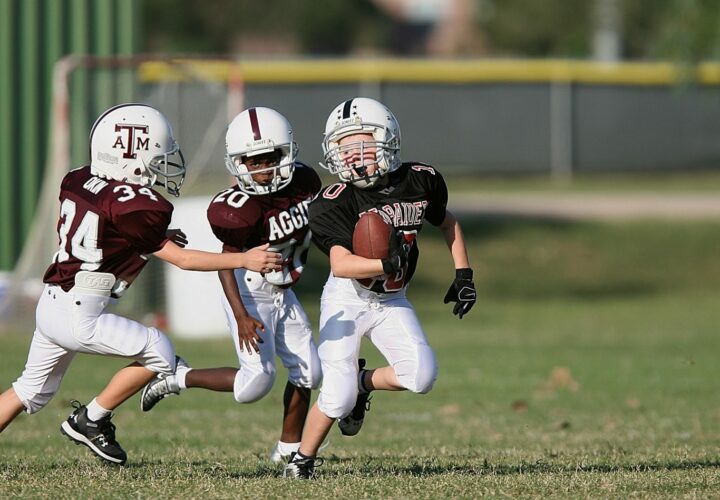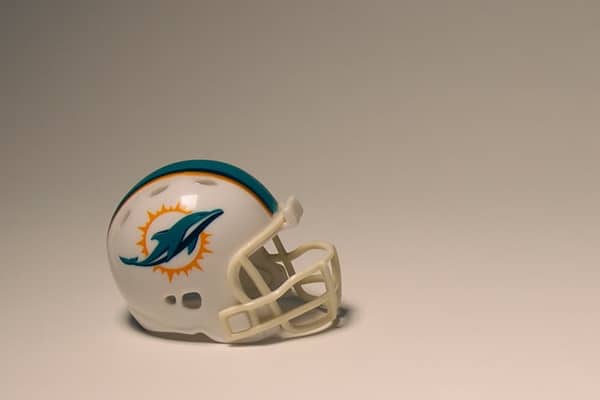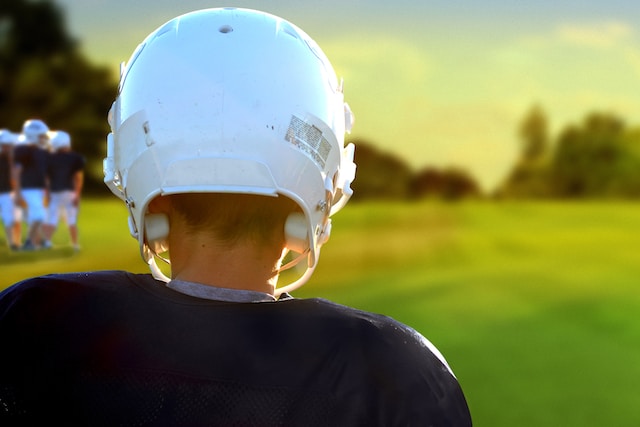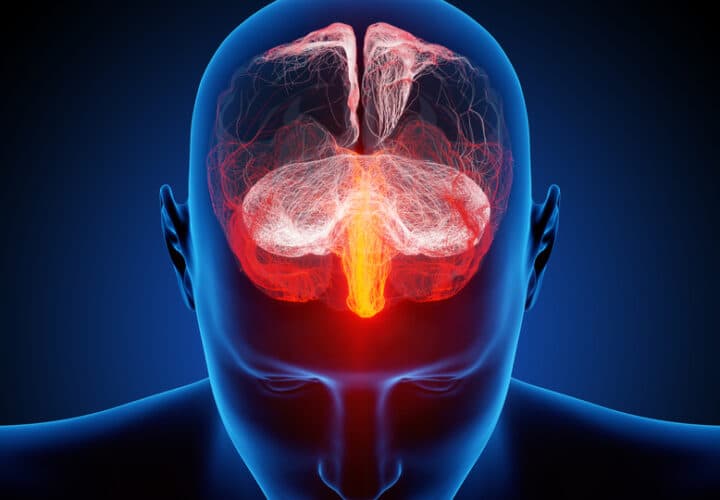Concussions could cause long-term damage, making them a big concern for athletes, parents, and healthcare professionals. Neuropsychologist Dr. Munro Cullum separates facts from fear.
Concussions are common, and concerns about their effect on brain health, especially in sports, are growing — particularly how they could lead to chronic traumatic encephalopathy (CTE), a degenerative brain disease that’s linked to repeated head trauma often found in athletes and veterans.
What really happens to the brain during a concussion, and could repeated hits trigger long-term damage, like CTE or dementia? Dr. Munro Cullum, a leading neuropsychologist at the University of Texas Southwestern Medical Center, has spent decades investigating CTE and its potential causes. His extensive research includes the short- and long-term effects of concussions, as well as risk factors for Alzheimer’s disease and other neurodegenerative conditions.
In this conversation with Being Patient founder Deborah Kan, Cullum explains what happens to the brain during a concussion, the widely varying symptoms, and what science tells us about recovery, risk, and long-term outcomes. He also shares what athletes, parents, and healthcare providers need to know about prevention and care.
Being Patient: Should we be letting kids play games like football?
Munro Cullum: There are always pros and cons. Football is one of those higher-risk sports for concussion and brain injury. There are many factors that parents have to consider: is the child ready for the sport at the age they’re considering, both physically and psychologically? Safety and the attitude of coaches and trainers are important: parents need to ensure their kids are in a safe environment, with as safe an attitude as possible.
We’re learning more and more about repetitive head hits. The good news is that most people after a concussion turn out just fine, even later in life.
Being Patient: Is it the type of hit that’s more dangerous, or is it the repeated hits? Is it possible that repeated hits — like heading the ball in soccer — can lead to impairment down the road?
Cullum: There’s a difference between general hits to the head and intentional headers. The literature suggests headers, when intentional, don’t tend to cause much in the way of cognitive impairment or brain injury.
But the literature is also mixed. Some studies report no significant differences in kids who head the ball a lot versus those who don’t; other studies found minor imaging differences. But overall, there doesn’t seem to be a huge long-term risk for people doing soccer headers.
The studies that show an effect look at the highest percentile: those heading the ball with big hits a lot. There may be some greater risk for those people. However, there are other factors: they also tend to be more aggressive players, for example.
“We’re learning more and more about repetitive head hits. The good news is that most people after a concussion turn out just fine, even later in life.”
Being Patient: Do we know which injuries cause the most damage? Are some concussions “better” than others?
Cullum: A concussion is a concussion. We have learned that rotational injuries are the ones that tend to produce or be more strongly associated with concussion symptoms.
If you’re hit from the side, and the brain twists as well as gets shaken, it tends to result in more symptoms than a head-on, direct linear hit.
However, most people turn out fine after a concussion. We don’t know enough about the injury to determine who might be at risk for these persistent symptoms.
A Neurology Researcher on What a Concussion Does to the Brain
Being Patient: What do we know about severe traumatic brain injury and the potential for CTE or dementia?
Cullum: Traumatic brain injury (TBI) is on a continuum: At the mild end, we call it a concussion, and it ranges all the way to severe TBI, which involves extended loss of consciousness, [more severe] symptoms, much poorer recovery, and a greater risk for dementia later in life. The links between head injury and dementia have been most strongly supported in the literature [in cases of] severe traumatic brain injuries.
Being Patient: A former athlete said that after a bad concussion, he returned to play, and later experienced warped vision. What is happening in the brain?
Cullum: Just like [how] brain injury occurs on a continuum, so do concussion symptoms. They can be very mild or quite distressing, like visual disturbances. You’ll see some people rendered unconscious, or showing abnormal posturing reflexes.
When we start getting worried about repetitive concussions is when recovery time for each subsequent injury is getting longer and longer. Those are the ones we’re most concerned about, and that’s when we start thinking about “How many is too many?” The answer to that is: we really don’t know.
No two brains are alike. A force that might produce concussion symptoms in one individual may not produce those symptoms in the individual beside them, even given the same exact injury. The saying in the field is: “If you’ve seen one concussion, you’ve seen one concussion.” We really start to get worried when the symptoms last longer or are more severe.
“‘How many is too many?’ The honest answer is: we really don’t know.”
Being Patient: Take us from concussion to the point where you would get worried — when it’s no longer just a concussion and something else is going on due to repeated hits.
Cullum: If you were to look at a fresh human brain, it’s kind of like thick Jell-O. Within the skull, when there’s an impact, or a rapid acceleration-deceleration force, the brain actually sloshes about and can come into contact with the skull. It’s protected by layers, but the brain can become bruised from bouncing back and forth.
The cortex — the major part of the brain — sits on top of the brainstem. It’s large, so it can move a bit. When a concussion disrupts ascending and descending fibers in that core brain region is what can produce full-on loss of consciousness. Or just briefly feeling dazed.
What happens years or decades later? That’s where we need more research. We think inflammation in the brain may be a driver of longer-term pathologies, or potential risk for dementia in certain individuals.
As noted, the vast majority of people do not have complications and are fine later in life after a concussion. Persistent symptoms are something our research group and others across the country are studying. There is a subset — 10 to 20 percent — that continue to report and experience unusual symptoms that last beyond the typical recovery window.
“The vast majority of people do not have complications and are fine later in life after a concussion.”
Being Patient: Tau is a big biomarker for CTE. In cases of dementia linked to traumatic brain injury, like CTE, is it true that tau appears earlier than in other forms?
Cullum: As far as CTE, it’s primarily based on the presence of abnormally phosphorylated tau in characteristic patterns. These appear deep in the brain’s sulci, [grooves on the surface of the brain], and they look different from the tau in Alzheimer’s disease.
CTE is a very rare condition. Detecting pathology at postmortem [after death] is the only way to diagnose CTE right now. When it is detected, it’s usually accompanied by other pathologies: Alzheimer’s disease pathology is common in more than half of the cases with CTE pathology.
A postmortem diagnosis of CTE can be made with just tiny amounts of abnormally placed tau in the brain. In fact, those cases often have other pathologies that are much more prevalent than CTE-related ones. So we don’t actually know what, if any, symptoms are truly related to CTE.
Being Patient: What is the best thing a person can do if they get a concussion? From your vantage point, what should be the standard of care in terms of concussion recovery — especially for athletes?
Cullum: First and foremost is concussion awareness and education. That applies to everyone: athletes, kids, coaches, staff, and parents. People need to learn how to identify the symptoms of a concussion.
Second, when a concussion is suspected, the child or adult should be removed from play. The NFL and NHL have great concussion protocols now. Occasionally players go undetected. Athletes often don’t want to report a concussion, because they’re afraid they’ll be pulled from play. That’s where education becomes really important.
I try to counsel young athletes that if they’re not feeling okay after a hit, they need to report it to somebody. Tell your coach, trainer, assistant coach — someone — so they can get you properly examined.
The real risk is going back into play too soon, before the brain has recovered, and then potentially sustaining another hit. During a concussion, the brain can swell, just like any other part of the body. That brain swelling can get really bad if you get a repetitive concussion before the brain has recovered.
There are occasional reports of second impact syndrome. People have died after repetitive concussion. It’s rare, but concussion awareness is really important. They need to be removed from that risky activity that caused the concussion and then they need rest. They should also be evaluated by a healthcare professional with experience in concussion.
What we’ve learned is that getting people back to their normal routine as soon as possible is best. In fact, light exercise after that initial day or two is good. Light exercise might be a brisk walk or riding a stationary bike. If symptoms get worse from activity, back off for the day, then progressively reengage in normal activities as symptoms [improve].
Most people recover from concussion. It’s a minority of people that report these persisting symptoms. A slow, progressive return to normal activity — without exacerbating symptoms — is the key.




